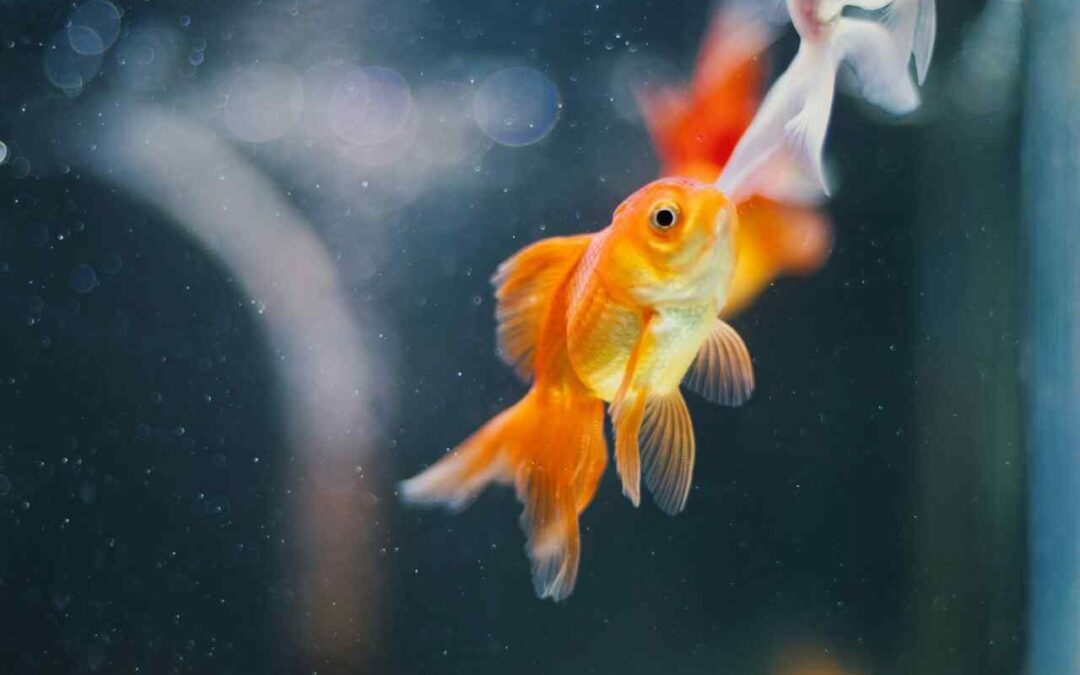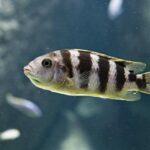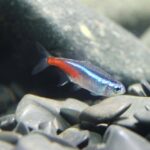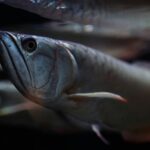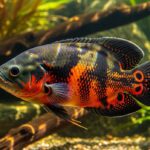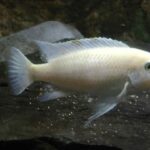Goldfish are probably one of the most iconic pets you can own. They’re bright, beautiful, and often the first fish people bring home when setting up an aquarium. But while they may seem low-maintenance, goldfish care requires more thought than most new owners realize—especially when it comes to feeding.
Many beginners make the same mistake: feeding too often, feeding too much, or feeding the wrong types of food. And since goldfish are notorious beggars (they’ll swim up to the glass and wiggle every time they see you), it’s easy to assume they’re always starving. But here’s the truth: feeding goldfish correctly is less about giving them more and more about giving them just enough in the right way.
So, let’s take a deep dive into how often to feed your goldfish, how much is safe, and what you can do to keep them healthy, happy, and swimming strong.
How Often Should You Feed Goldfish?
Goldfish should generally be fed one to three times daily. The sweet spot depends on their age, size, and your ability to stick to a routine.
- Young Goldfish (Juveniles): Since they’re growing rapidly, they need three small meals per day. Their fast metabolism burns through food quickly.
- Adult Goldfish: They’re not growing as fast, so two meals per day are enough, though three is still safe if you prefer smaller feedings.
- If You’re Busy: Don’t stress if you can’t manage three feedings. Twice a day is perfectly fine for healthy goldfish.
The most important thing isn’t the number of times you feed, but consistency. Feeding at regular times (like morning and evening) helps your fish build a routine, which reduces stress and keeps them healthier overall.
How Much Should You Feed?
Here’s where many fish keepers slip up. Goldfish don’t have a stomach like humans; instead, food passes quickly through their intestines. That means they’re always on the lookout for more—but that doesn’t mean they actually need more.
The golden rule is the two-minute test:
👉 Feed only what they can eat in two minutes or less.
If food is still floating or sinking uneaten, you’ve overfed. And that uneaten food doesn’t just disappear—it breaks down, releasing ammonia that clouds your water and stresses your fish.
Portion Guidelines
- Pellets/Flakes: A small pinch per feeding is usually enough for a couple of goldfish.
- Vegetables: Softened peas, blanched spinach, or zucchini slices can be given a few times a week as a supplement.
- Protein Treats: Occasional treats like frozen bloodworms, brine shrimp, or daphnia add variety but shouldn’t replace their staple diet.
A Quick Example: Two medium-sized goldfish in a 20-gallon tank might only need a small pinch of pellets per feeding. It looks tiny in your hand, but it’s plenty for them.
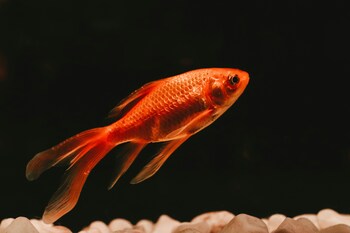
What Should You Feed Goldfish?
Commercial goldfish foods—flakes, pellets, or gel foods—form the base of their diet. But just like people, goldfish do better when they eat a variety of foods.
Staple Diet
- High-quality pellets or flakes designed for goldfish.
- Gel food (like Repashy or homemade mixes) for added nutrients.
Healthy Extras (2–3 times a week)
- Vegetables: Peas (shelled and softened), spinach, lettuce, zucchini. These help with digestion and reduce constipation.
- Protein Treats: Frozen bloodworms, brine shrimp, or daphnia. Great for variety but should be given sparingly.
What to Avoid
- Bread, crackers, or processed human food. These swell in their digestive system and can cause bloating.
- Oily, salty, or spicy foods. Not suitable for fish.
Smart Feeding Tips for Goldfish Owners
Feeding your goldfish isn’t just about tossing in food—it’s about keeping them healthy long-term. Here are some smart feeding practices to follow:
1. Break Meals into Smaller Portions
If you want to feed three times a day, divide the same total amount you’d feed in two meals into three smaller ones. This keeps digestion smooth and reduces waste.
2. Watch Their Behavior
Healthy goldfish should swim actively before and after meals. If they’re sluggish, floating oddly, or gasping at the surface, it may be linked to diet or water quality.
3. Avoid Overfeeding
Overfeeding is the most common mistake new fish keepers make. Goldfish are scavengers by nature and will graze all day if given the chance. Extra food leads to digestive problems, swim bladder issues, and dirty water.
4. Try a “Fasting Day”
Yes, goldfish can go without food for a short period! In fact, skipping food for one day every couple of weeks gives their digestive system a chance to reset. It also reduces the risk of bloating. Don’t worry—goldfish can easily handle it.
5. Maintain Clean Water
Frequent feedings = more waste. Always pair your feeding routine with regular water changes and filter maintenance to keep the tank environment safe.
6. Provide a Balanced Diet
While commercial goldfish food is the main staple, variety makes for healthier, more active fish. Mixing in veggies and occasional protein ensures they get all the nutrients they need.
7. Match Feeding to Seasons
- Indoor aquariums: Stick to the normal routine.
- Outdoor ponds: In cooler water, goldfish metabolism slows down. When temperatures drop below 50°F (10°C), reduce feeding or stop altogether, since they can’t properly digest food in cold water.
Why Overfeeding is Dangerous
Overfeeding isn’t just bad for your fish’s belly—it affects the whole tank. Here’s why it’s such a problem:
- Digestive issues: Too much food can cause constipation or swim bladder problems (when fish float awkwardly or upside down).
- Dirty water: Uneaten food decays, releasing toxins like ammonia and nitrites. This stresses your fish and can even be fatal.
- Algae growth: Extra nutrients from waste fuel algae blooms, turning your tank green and cloudy.
In short: feeding less is almost always safer than feeding too much.
Signs of a Healthy Feeding Routine
How do you know if you’re doing it right? Here are the telltale signs:
- Your goldfish are active, alert, and curious.
- Their colors are rich and vibrant.
- They eat eagerly but don’t look bloated afterward.
- The tank water stays clear, with minimal waste buildup.
If you notice floating waste, cloudy water, or a lethargic fish, it may be time to adjust your feeding routine.
Common Feeding Mistakes to Avoid
Even well-meaning fish keepers sometimes get it wrong. Watch out for these common slip-ups:
- Dumping in too much food at once – Small, frequent feedings are always better than a single large one.
- Believing “begging means hungry” – Goldfish often beg even when they’re full. Stick to the schedule.
- Feeding only flakes – Flakes can lose nutrients quickly; try mixing in pellets, gel food, and fresh veggies.
- Ignoring water quality – More feeding means more waste. Don’t skip tank cleanings.
- Skipping variety – Just like people, goldfish need a balanced diet, not the same food every day.
Fun Facts About Goldfish and Feeding
Goldfish have been around for centuries, and along the way, they’ve picked up some fascinating habits when it comes to food:
- Goldfish don’t have stomachs! That’s why they’re always looking for snacks—they digest food quickly, which makes small, frequent meals best.
- They’ll beg like puppies. Many goldfish learn to recognize their owners and will swim to the front of the tank at feeding time. Don’t let those wiggly tails fool you—they’re not always hungry.
- They love peas. Many fishkeepers call peas the “miracle food” for goldfish because they help digestion and prevent bloating.
Feeding time isn’t just about nutrition—it can be a bonding moment with your fish.
FAQs About Feeding Goldfish
1. How often should I feed my goldfish?
Feed goldfish once to three times daily, depending on their age and your schedule. Young fish do best with three smaller meals, while adults are fine with two.
2. How much food should I give?
Only feed what they can eat in two minutes or less. Any more than that leads to overfeeding and water contamination.
3. Can I feed my goldfish human food?
Yes, but only certain types. Safe options include blanched peas, spinach, lettuce, and zucchini. Avoid bread, processed foods, or anything salty and fatty.
4. Do goldfish need a fasting day?
It’s not required but beneficial. Allowing your goldfish to skip food for one day every couple of weeks helps digestion and prevents bloating.
5. What happens if I overfeed my goldfish?
Overfeeding can cause swim bladder issues, constipation, and dirty water, which harms both fish and tank health.
5. Can goldfish survive without food if I travel?
Yes, healthy goldfish can go up to a week without food. For longer trips, use an automatic feeder or ask someone to help.
6. Should I feed differently in winter?
Yes—if your goldfish live outdoors. In cold water below 50°F (10°C), stop feeding until spring because they can’t digest food properly.
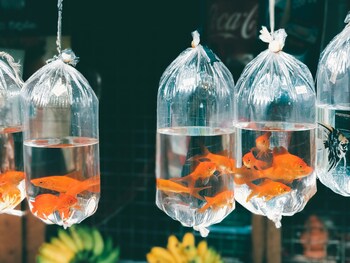
Final Thoughts
Feeding goldfish isn’t about giving them endless snacks (even though they’ll try to convince you otherwise). It’s about balance, consistency, and quality.
Stick to two or three meals a day, follow the two-minute rule, and offer a mix of pellets, veggies, and the occasional treat. Don’t be afraid to skip a meal or introduce a fasting day. And remember: a little food goes a long way for goldfish.
Get the feeding right, and you’ll enjoy vibrant, active fish swimming in a clean, healthy tank for many years to come.

